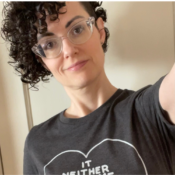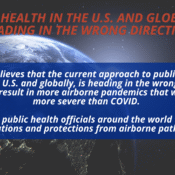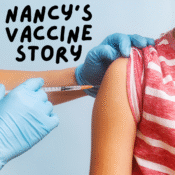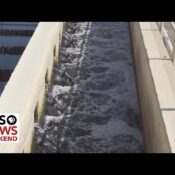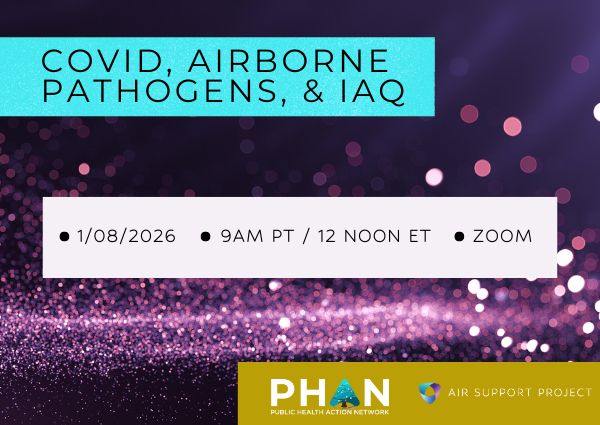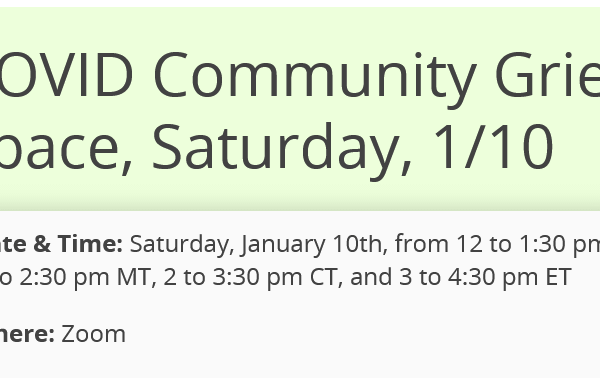
Traveling COVID-safely in a not-COVID-safe world
With many folks getting ready to travel this summer, experts are expecting a COVID surge in the coming months, and we know it can be hard to figure out how to travel safely. If you’re traveling on a bus, train, or plane, we have several recommendations for steps you can take. Reminder that we are not doctors and you should do your own research to see what steps make the most sense for you, but these steps have worked for many of us here at PHAN. You don’t have to do all of these, but if you do as many as you comfortably can, tailored for your own circumstances and comfort level, you can increase your chances of staying well and enjoying your travels.
Note that some other travel planning guides have come out lately. This article from Keith Hoodlet at securing.dev is pretty good. This article from The Sick Times about traveling with Long COVIDPersistent symptoms following recovery from acute COVID-19. is really helpful with good tips for those with Long COVIDPersistent symptoms following recovery from acute COVID-19. and other chronic health issues. This article from the travel blog Two Dusty Travelers is more from the perspective from people who travel a lot and don’t have health issues but want to avoid getting COVID. This article from Real Simple focuses on plane travel and what you can do before and during a flight to stay COVID-safe.
We wish you happy and safe travels!
PRE-TRIP PLANNING:
- VACCINATION:Unfortunately, in the U.S., the FDA has announced a new vaccination approval framework that states that vaccines will only be approved for folks 65 and older, or folks who have one of several underlying conditions. This means that if you have insurance and you are not 65 or older, the new booster shots this fall (2025) may not be covered by your insurance. The CDC estimates that around three-quarters of all Americans have at least one of the specified underlying conditions. All of that said, if you can get a vaccination, and if your most recent COVID vaccination was over six months ago, it’s recommended that you get the most current booster if possible. Give yourself at least two weeks prior to going on your trip for the vaccination to have full effect.
- PREVENTATIVE MOUTHWASHES AND NASAL SPRAYS: Before traveling, you can use a mouthwash containing CPC and/or a nasal spray containing iota carrageenan or xylitol. These are commonly available from online retailers. Note that there are only a few studies indicating CPC is effective against COVID and generally they indicate it’s somewhat effective only if you already have COVID (e.g., https://www.biorxiv.org/content/10.1101/2020.11.13.381079v2). Also, be aware that some people are allergic to xylitol.
- TEST BEFORE YOU LEAVE: It’s a good idea to test yourself for COVID shortly before you’re ready to leave, and if you test positive you should consider postponing your travel. At-home tests come in two categories: RAT/LFT (rapid antigenA molecule that triggers an immune response. tests / lateral flow tests), which are usually cheaper than molecular tests but they’re not as sensitive, and they can take days to show a positive result after being infected. If you’re using RAT/LFT tests, you should continue to test every day for up to five days. The molecular tests are more sensitive and will show you if you’re infected earlier than RAT tests, but they are more expensive and will usually require purchasing a separate reader device. Some of the at-home molecular tests & devices that are most recommended are from PlusLife, Metrix, and Lucira. PlusLife and Metrix both require purchasing devices that you run the less expensive individual tests on. PlusLife has a more expensive reader device, but the individual tests are cheaper than those for the Metrix device. PlusLife is currently not available for customers in the U.S. but we’re hoping that situation resolves itself soon. Lucira offers single-use tests without a device. Read more in our article about at-home RAT & molecular tests.
DURING YOUR TRAVELS:
- MASKING: While in transit, wear a high-quality mask that’s well-fitted. Common types available are N95s, KN95s, and FFP2s. Read our article explaining different mask types and how to choose the right mask for you.
- AVOIDING EATING AND DRINKING: Eat a big meal and hydrate as much as possible before embarking on your transportation, then avoid eating and drinking while traveling in public spaces where others are present. You can install a sip-device on your mask to reduce exposure, but those devices generally need to be replaced after ten uses, or after thirty days, so they can get expensive.
- EYEWEAR: You can get protective goggles. Stoggles is one brand we’ve heard good things about.
- PORTABLE AIR QUALITY MONITOR: Bring a small portable CO2/air quality monitor to show areas that have the worst air flow so you can move to an area with better airflow, find a way to increase the airflow in your area, or take additional appropriate precautions. These devices do not show viral loadThe concentration of virus in a person's bloodstream or respiratory secretions., only the amount of CO2 and other particles, but CO2 levels can be taken as a rough proxy for how much ventilationThe process of circulating air to improve indoor air quality. the space is getting. Aranet is a very commonly used device but there’s others as well. Read reviews of CO2 monitors from BreathSafeAir.
- ROOM AIR FILTER: Having a room air filter device that’s capable of a minimum of 6 air changes per hour (the standard recommended by the World Health Organization) can reduce your chances of getting COVID or other airborne diseases. If your destination does not have filtrationThe process of removing particles from the air or liquids using filters. and ventilationThe process of circulating air to improve indoor air quality. systems, bring or borrow a portable air filter to your destination and run it for a while before settling in. There’s no evidence about how long you can or should run such an air filter but running it for at least half an hour will likely get you some improvement in the air quality. Otherwise, air out your vacation rental or hotel room before settling in. Clean AirAir free of pollutants, including viruses, bacteria, and harmful particles. Stars, a non-profit organization that rates businesses for their clean-air practices, has a tool to help you determine what kind of portable air cleaner devices may work best for you. Or you can review their raw-data spreadsheet with data on hundreds of portable air filters: https://docs.google.com/spreadsheets/d/17j6FZwvqHRFkGoH5996u5JdR7tk4_7fNuTxAK7kc4Fk/edit?usp=sharing
AFTER YOU ARRIVE:
- TESTING: It’s a good idea to test yourself the day you arrive and at least the next day. If you’re showing any symptoms you should of course test yourself immediately and for several days thereafter.


